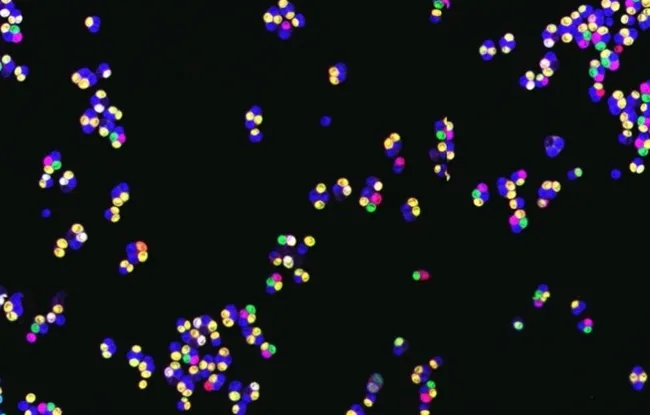- Home >
- Institut Curie News >
- Meiosis and crossing over: pairing and separating
During meiosis, the homologous chromosomes of the germ line cells (the cells that produce oocytes or sperm) separate, and each gamete inherits only one maternal or paternal copy of each chromosome. To do this, the homologous chromosomes have to meet, then pair along their entire length, before being separated and distributed into each daughter cell. The precise separation of these chromosome pairs is essential to ensure that gametes are generated with the proper chromosome content, thus avoiding problems of sterility and/or anomalies of chromosome segregation (as with Down Syndrome or Turner Syndrome). During this process, the genetic material is also rearranged between the homologous chromosomes. This type of “recombination” can only take place via fine-tuned programmed breakage mechanisms and subsequent repair of DNA molecules. These mechanisms are highly conserved in eukaryotes, from yeast to humans. “Nodes” (Holliday junctions) form between the homologous chromosomes to make them exchange their arms, during crossing over. At the same time, the homologous chromosomes are paired along their entire length within a “zip” -like structure, namely the synaptonemal complex. This complex exerts control over the number and distribution of recombination events along the chromosomes.
While the functional links between these two essential aspects of meiosis - recombination and the synaptonemal complex - were known, their molecular nature was not known.
Using genetics, proteomics and in silico modeling of protein interaction fields, the Chromosome Dynamics and Recombination team (Institut Curie, CNRS, Sorbonne University), led by Valérie Borde, in collaboration with CEA/12BC researchers, identified a protein, Zip4 (TEX11 in humans), which makes a direct connection between the recombination machinery and the central elements of the synaptonemal complex (Ecm11-Gmc2). When this link is broken following Zip4 mutations, the “zip” between the homologous chromosomes is no longer present, and the meiotic recombination is deregulated.
These phenomena observed in Saccharomyces cerevisiae are highly conserved in eukaryotes, thus rendering yeast, which is easy to use, an essential model organism. Researchers identified and studied functional and structural pairs of recombination proteins and of the synaptonemal complex in humans. In particular, one of the proteins studied, TEX12, normally restricted to meiotic cells, has just been found to be abnormally expressed in many cancers and contributes to the growth of cancer cells.

The “ZZS” complex containing Zip4 is loaded on the chromosome axis, via the interaction between Zip4 and Red1 (1). Then, the ZZS complex is relocated on the recombination intermediaries, between the…
|
Reference : The Zip4 protein directly couples meiotic crossover formation to synaptonemal complex assembly. Alexandra Pyatnitskaya, Jessica Andreani, Raphaël Guérois, Arnaud De Muyt et Valérie Borde. Genes and Development. 30 décembre 2021, doi:10.1101/gad.348973.121 |
Research News
Discover all our news
Celebration
The Immunity and Cancer research unit (U932) celebrates its twentieth anniversary
12/12/2025
Artificial Intelligence
08/12/2025


